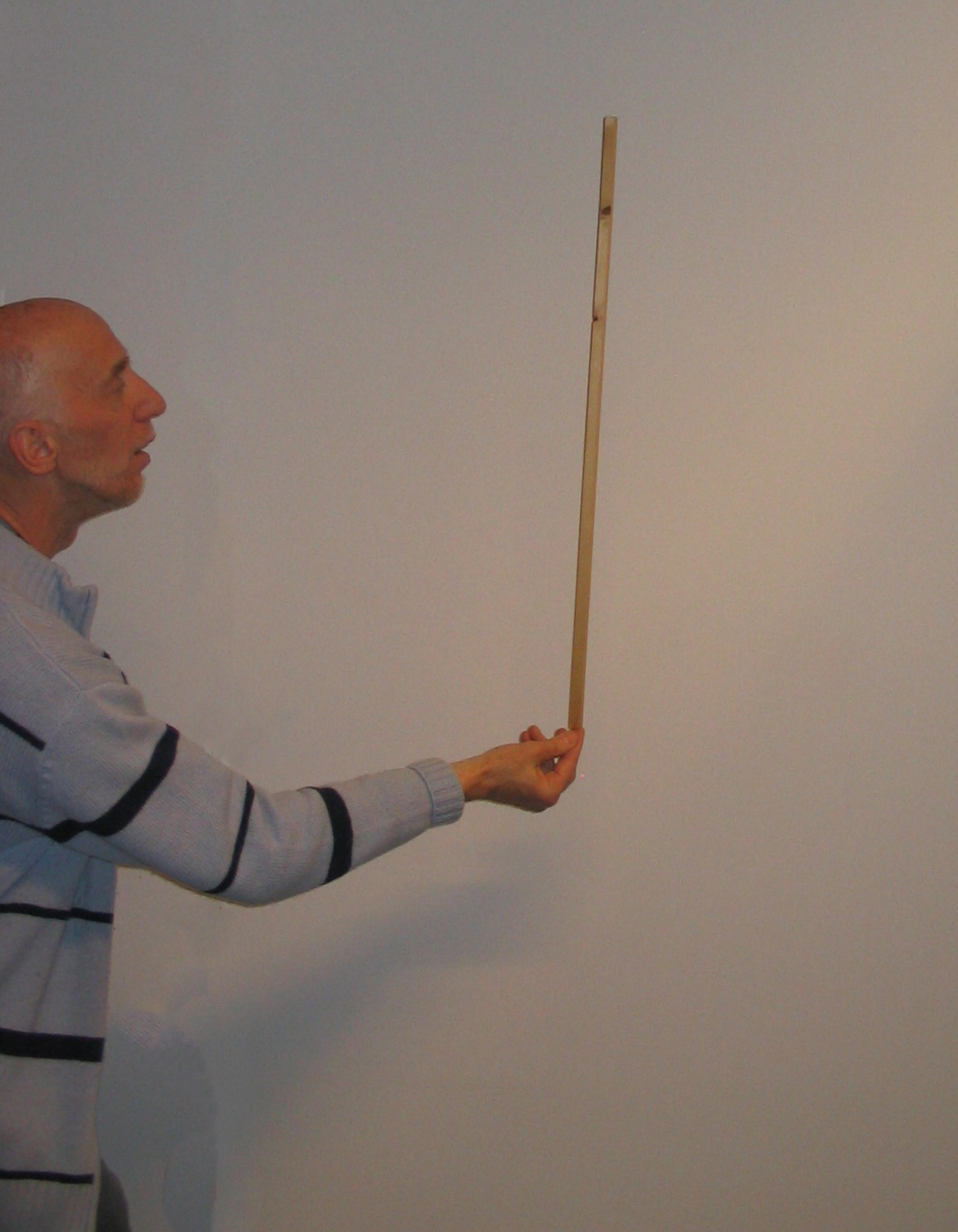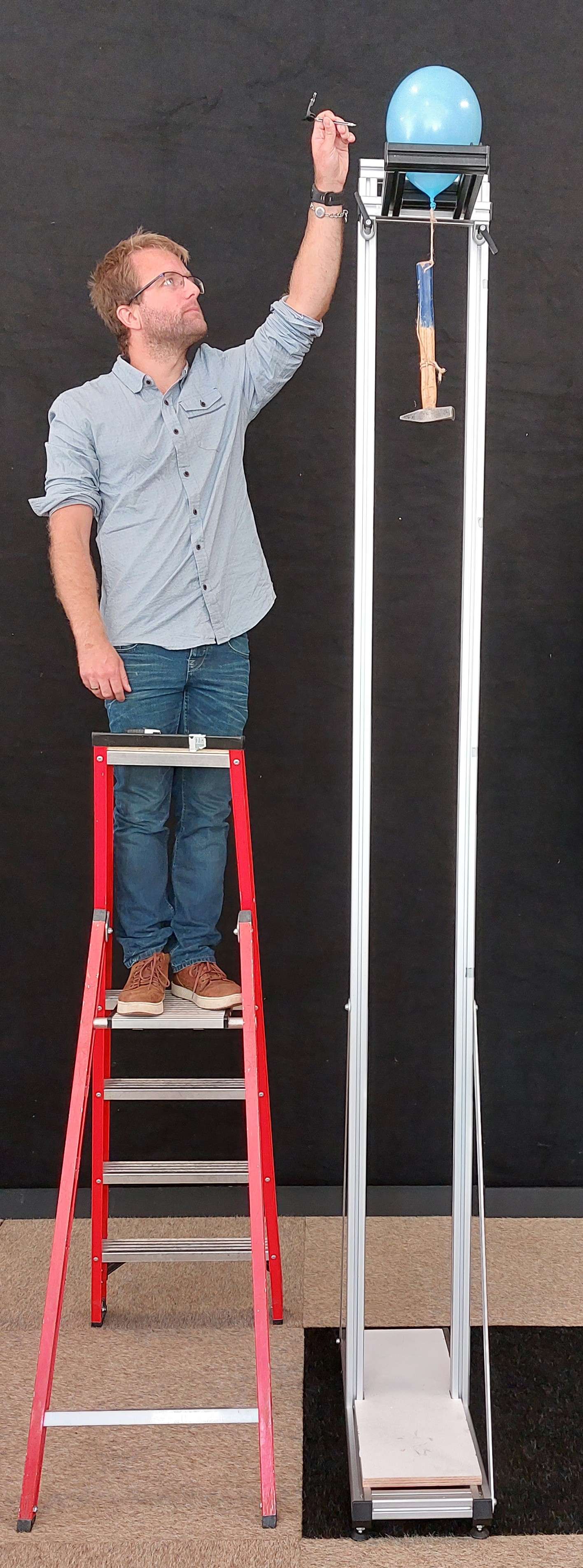8. Introduction#
Physics demonstrations are fascinating, inspiring, and educational—they truly deserve to be spotlighted in our classrooms. However, they also require a significant investment of time. Gathering and coordinating materials, setting up components in such a way that the focus is on the key aspects, preparing the presentation—these are just the starting point. Engaging students and involving them deeply, sparking curiosity, building suspense, to ultimately unveil the phenomenon. All this effort is meant to ensure that your audience will never forget your demonstration! And, finally, all the cleaning up… Should you even bother doing demonstrations? Absolutely!!! But when you do, do it right! Make it memorable and impactful, turning a simple lesson into an unforgettable learning experience.

Where most books on physics demonstrations describe the experiments only, we provide thoughtful approaches and elaborate what is known about the pedagogy of demonstrations.
8.1. What can demonstrations accomplish?#
Almost everyone who is enthusiastic about STEM education remembers a great demonstration. One that sticks in the memory. One that you would like to share because you enjoyed it so much yourself. But did you learn anything from it? Do physics concepts become better anchored? An article in the American Journal of Physics states:
Despite popular beliefs to the contrary, students learn little, if anything, from traditionally presented classroom demonstrations [Crouch et al., 2004].
So… should we abandon those demonstrations? That at least would save time… a lot of time. Crouch et al. [2004] fortunately also report that you can significantly increase the learning effect of demonstrations. To do so, one important part of your demonstration may involve asking your students to predict the result. Meaningful predictions of the results (requiring some understanding of the phenomenon) followed by their observation is reported to lead to increased learning. They also show significantly more insight and understanding, which in the study was reflected in a better test result. Whether students learn anything from a demonstration is then much less in question.
Fig. 8.2 Who will forget a great demonstration, one that comes with a BANG?!#
A carefully considered pedagogical strategy can increase the likelihood that a demonstration increases students’ comprehension of the phenomenon at hand. This is why this book, alongside many physics demonstrations, presents those strategies relevant to physics demonstrations. We first cover some basic ideas and then for each of the four demonstration categories in this book devote a section to their specific purposes.
So what exactly can you accomplish with demonstrations? The overall learning goals can be categorized as follows (after Hodson [1993]):
Learning physics#
It is often said that “practical activities help students understand the theory better by relating it to the world around them”. We think the converse is also very important: “Students learn to better understand the world around them by linking it to the theory”. This is known as “learning physics”. Our Demonstrations for conceptual development cover learning objectives of this kind.
Most of our demonstrations relate to conceptual development. They have been chosen for their suitability for elucidating a physical phenomenon or concept. They belong in regular instruction lessons. The descriptions often include step-by-step suggestions for implementation in class, including opportunities to get students thinking for themselves as much as possible. They stimulate physical thinking and help students build a conceptual network in physics.
Learning about physics#
How do physicist work? If physicists come across an interesting phenomenon or problem, is there a strategy that always works and provides a rigorous answer or solution? Is that answer set in stone for ever or may it be modified or replaced later on? How sure are scientists if they have come up with a new theory that explains a phenomenon in, e.g., the field of quantum mechanics? “Learning about physics” focuses (amongst others) on the methods scientists employ to pursue those concerns, the distinctive language in which scientific knowledge is expressed, the role and status of the knowledge scientists generate and how that knowledge is scrutinized and validated [].
Our demonstrations on nature of science aim at a deeper understanding of the characteristics of science/physics.
Learning to do physics#
Physics education aims at developing in students the ability to think like a physicist []. This requires a thorough understanding of the nature of science, a broad and deep conceptual understanding of many phenomena, but also expertise in doing physics.
As stated by :
Physics is a way of approaching problem solving, which requires direct observation and physical experimentation. Being successful in this endeavor requires one to synthesize and use a broad spectrum of knowledge and skills, including mathematical, computational, experimental, and practical skills; and to develop particular habits of mind. “Thinking like a physicist” and constructing knowledge of our physical universe pervade all of the recommended learning outcomes.
It this therefore not sufficient to learn (about) physics, students need to do physics to gain a deeper understanding of what being a physicist entails. Citing :
Here the emphasis is not on learning about the methods used by scientists, nor on developing expertise in using particular laboratory techniques (the emphasis of much laboratory work in school), but on using the methods and procedures of science to investigate phenomena, test and develop understanding, solve problems and follow interests.

Fig. 8.3 Determination of \(g\) revolves around the question how you can determine the acceleration due to gravity as precise as possible.#
Our demonstrations on teaching scientific inquiry cover this learning objective. These demonstrations aim at teaching students to become aware of the decisions they have to make when conceiving a scientific investigation. They are meant to teach students to thoroughly consider various options and determine, also in regard of the practical limitations, what decision is ‘best’ from a scientific perspective. Argumentation plays a major role in this.
Teaching students how to investigate their world independently in a scientific way includes addressing questions such as:
What does it mean when some claim is said to be “scientifically proven”?
What values are attached to a claim if it is “scientifically proven”?
What do you have to do to prove something scientifically, and how certain is knowledge obtained in that way?
It also involves answering these questions based on observations, and obtaining observations of sufficient quality. During this process, the students get an idea what it is to be a scientist. The demonstrations described here revolve around the skills that are indispensable in scientific research on the one hand and about the characteristics of science on the other. These skills include carefully observing, critically analyzing a problem, developing a model to explain observations, or testing expectations with an experiment [Pols et al., 2022]. The knowledge created in the process is man-made. That knowledge is as certain as knowledge ever gets and yet will always be amenable to improvement.
Affective goals#
There might be a fourth reason why we include demonstrations in our teaching-not included in the framework of . Although all physics should be taught in such a way that it is interesting and relevant to students, especially demonstrations have the possibility to motivate students, evoke pleasure in physics, arouse interest in the subject, and develop fascination with the phenomena []. Demonstrations contribute to an understanding of the motivations of physicists and an appreciation of their achievements. This aspect of “learning about physics” in Demonstrations for special occasions probably requires no further explanation.
Demonstrations are fun to include in special occasions: at an open day, an anniversary or a farewell. In this book you will find examples of demonstrations that stimulate thought, but which also have a surprising or playful twist, making them suitable to show at such special occasions. The topics are by no means always part of the school physics curriculum. However they all appeal to common sense while the outcome is often counterintuitive. The charm of physics is taken full advantage of in this section!

Fig. 8.4 A teacher demonstrating the singing rod to teach students about standing waves.#
8.2. Different goals demand different methods#
Many of our demonstrations can be easily adapted to be used for a different purpose. Our description may focus on conceptual development and support your exploration with students of what is happening and why it happens in a certain way. But you may equally well use that same demonstration to ask students to think of further questions associated with the observed phenomena and experiments to explore them, and instead aim at teaching them how to set up a scientific investigation. It needs little explanation that each of these goals require different teaching strategies and, hence, obtained their own chapter in this book.
We have found the following questions of value:
What is happening here? Do I understand this, or is it different than I thought?
What is the meaning of what is happening here? When we say that this is how it ‘really’ is, what exactly do we mean?
Is this actually true? Can I convince myself and others that this is really the way it is?
In physics research, all of these questions matter but in demonstrations this is not always the case. And certainly not all of them at the same time. Demonstrations play a role in the learning process where you have to offer problems in stepwise fashion, gradually shifting the emphasis over the course of the learning process to more complex problems. That provides the viewer with the opportunity to processing and develop skills that ultimately add up to an inquisitive attitude.
Questions like question 1. encourage thinking-back-and-forth between theory and practice. In demonstrations of this kind something often happens that your audience doesn’t expect and that raises questions. This will allow you to illustrate how in physical research you are constantly testing theory and practice against each other. Students experience this with the support of the teacher in the demonstrations.
Questions like question 2. focus on argumentation. When doing scientific inquiry students often seem satisfied with any answer they can find, without spending further effort in finding the most convincing answer available. In science only that optimally convincing answer would be good enough. But what do we find convincing in science, and why? Demonstrations can develop scientific understandings of this kind in students.
Questions such as question 3. deal with the nature of science. In successful research the researcher is looking for something that was not yet known. But what exactly does it mean when that researcher says, “I have scientifically established this”? Are the findings definitely and definitely true then? Would another researcher always and everywhere come to the same conclusion then? Demonstrations contribute to an understanding of the nature and quality of the product of physical research: scientific knowledge.
8.3. References#
Catherine Crouch, Adam P Fagen, J Paul Callan, and Eric Mazur. Classroom demonstrations: learning tools or entertainment? American journal of physics, 72(6):835–838, 2004. doi:10.1119/1.1707018.
Derek Hodson. Re-thinking old ways: towards a more critical approach to practical work in school science. Studies in Science Education, 1993.
Freek Pols, Peter Dekkers, and Marc De Vries. Defining and assessing understandings of evidence with the assessment rubric for physics inquiry: towards integration of argumentation and inquiry. Physical Review Physics Education Research, 18(1):010111, 2022. doi:10.1103/physrevphyseducres.18.010111.
